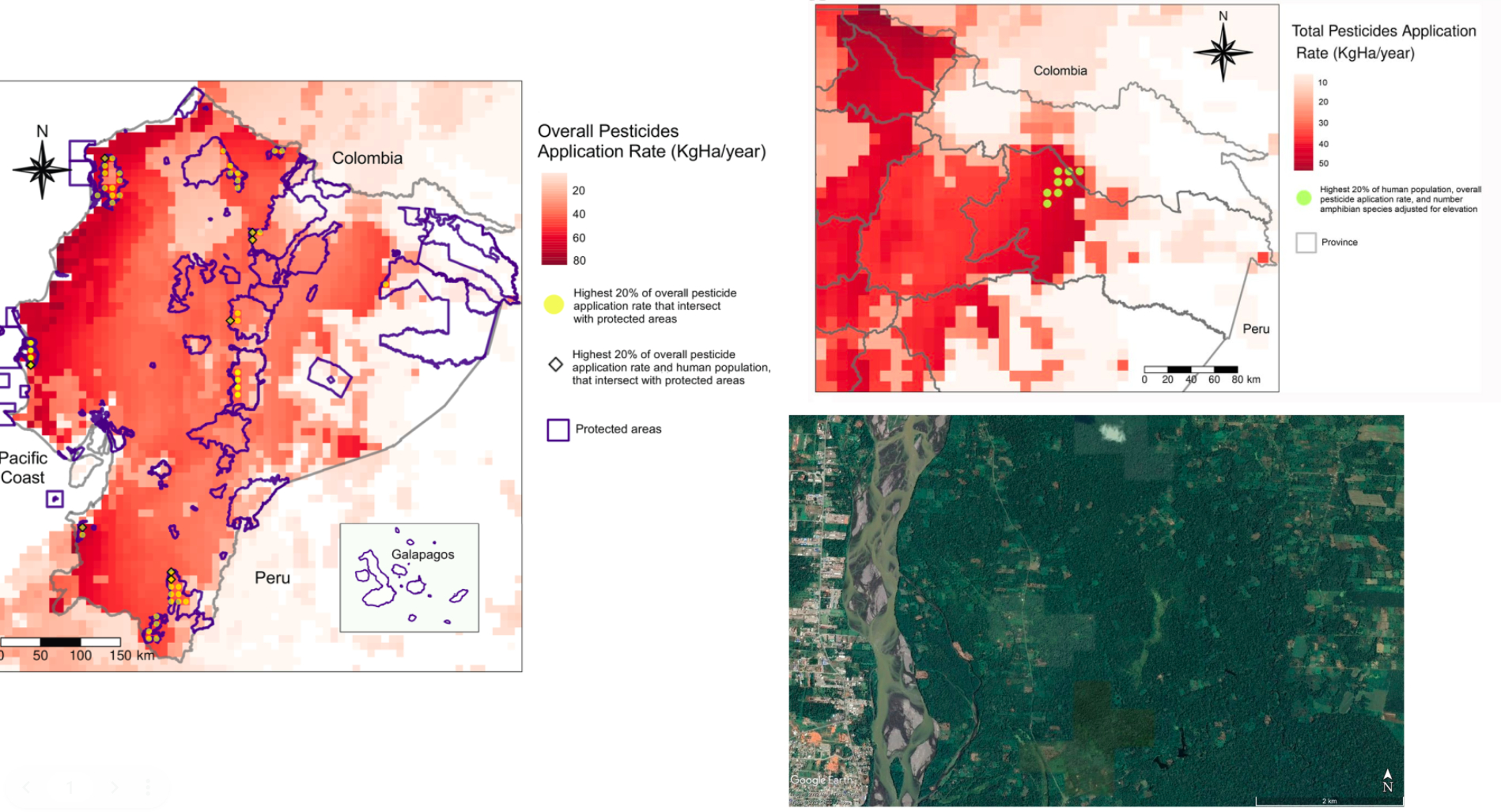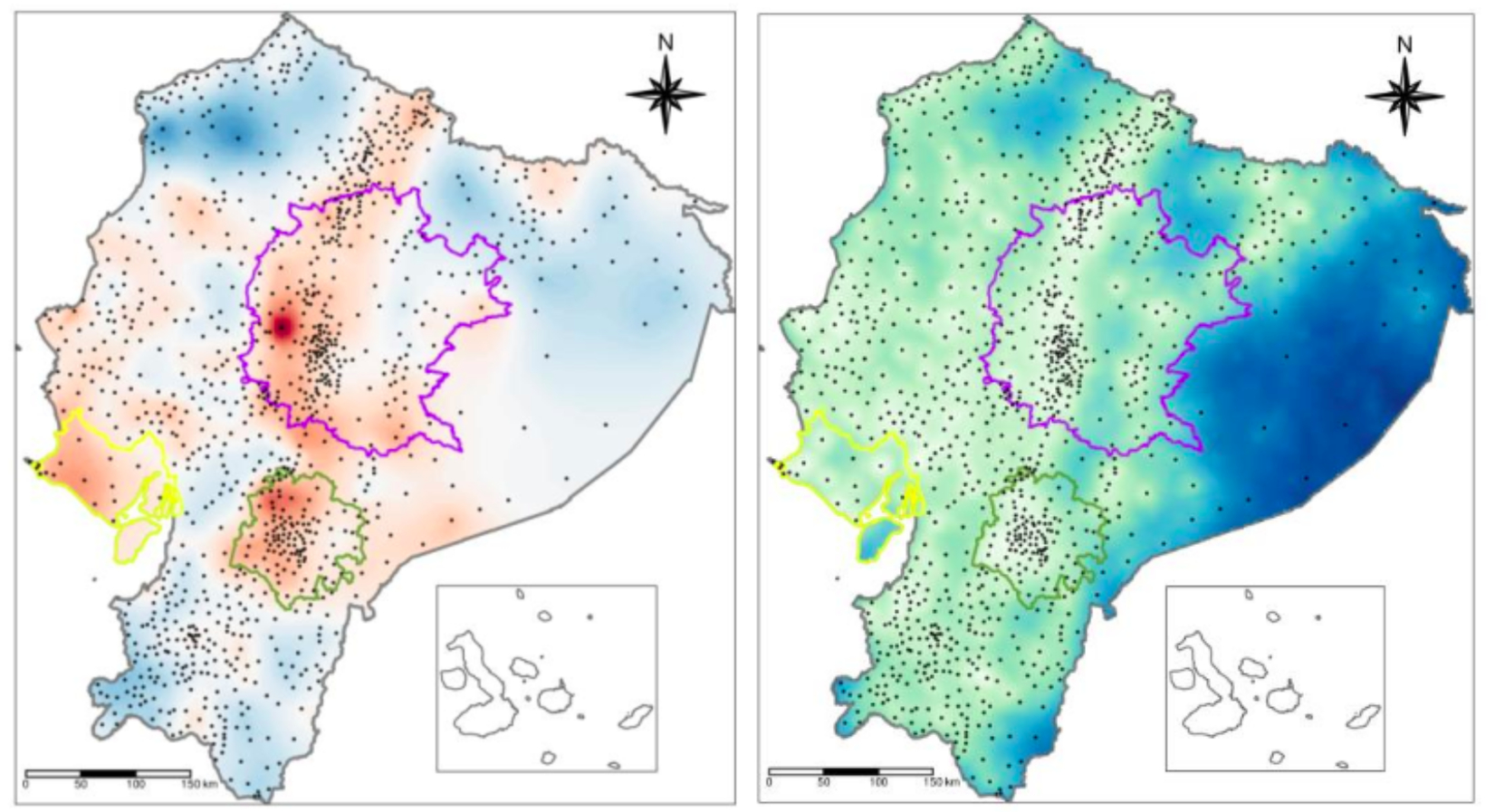
Harnessing big Data, mapping, and health geography to identify areas of pesticide contamination concern in Low- and Middle-income Countries (LMIC)
The extensive and increasing application of pesticides in agriculture is receiving more recognition as a major chemical pollution challenge due to its severe impacts on human health and ecosystems' ecological integrity. Global food systems are increasingly relying on intensive agricultural practices in LMIC, establishing as major drivers of global environmental change and expanding chemical exposures where national-level exposure controls, monitoring, and data are limited. Environmental exposures to pesticides through agricultural drift are particularly concerning for LMIC, where there is often high pesticide application rates, and less separation between farming and other land uses, contributing to widen local and global health disparities.
Moreover, exposure assessments are usually contained to the occupational settings of workers handling pesticides, and favour recommendations centred on promoting safety behaviours. In contrast, the environmental exposure of populations living in intensive agriculture landscapes, where individuals have limited agency to control exposures, is understudied and lacks monitoring and controls.
Using Ecuador as a case study, I developed a geospatial research tool to integrate global pesticide use data, population density, and ecosystem integrity indicators . This allowed us to analyze the distribution of application rates and identify regions of concern because of high potential exposure to human populations and strategic ecosystems. In addition, we found that about a third of the population in Ecuador live in areas with high pesticide applicaiton rates . Our study is a step towards understanding this planetary health threat in a country with one of the highest application rates of pesticides worldwide, an export-bound agricultural industry, a large population at risk, remarkable biodiversity and ecosystems, and a limited understanding of the nationwide extent of pesticide contamination. We found widespread and alarming intensive use of pesticides in Ecuador in regions that overlap with human populations and ecosystems at risk of exposure .
While our study focused on Ecuador, it is unlikely that the widespread risk of exposure in this country is an isolated case. Countries may have different spatial and temporal arrangements of agricultural production where human populations and natural ecosystems are at differential risk of exposure to pesticides. This study’s accessible, modular, and scalable methods can be replicated worldwide. Moreover, they can be adapted to local priorities, and additional data (e.g., water scarcity, malnutrition) could be integrated to identify areas of concern based on multiple criteria.

